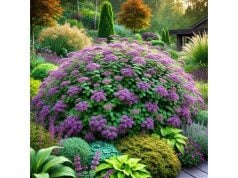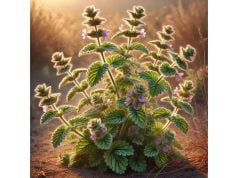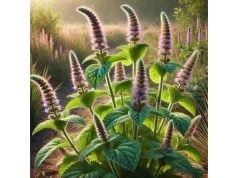
Himalayan Silver Fir, an ancient and revered botanical treasure native to the majestic Himalayas, offers a rich blend of natural compounds and potent healing properties that have been cherished for centuries. Renowned for its therapeutic benefits, this evergreen conifer supports respiratory health, enhances immune function, and promotes overall vitality. Its unique active compounds have been integral in traditional medicine, offering natural relief for various ailments. This comprehensive guide delves into its botanical attributes, active chemical constituents, diverse health benefits, and contemporary research insights, ensuring you unlock the full potential of Himalayan Silver Fir in your wellness journey.
Table of Contents
- Botanical Attributes and Identification
- Phytochemical Composition and Active Compounds
- Therapeutic Benefits and Essential Properties
- Practical Applications and Safety Guidelines
- Scientific Research Highlights and Key Findings
- Frequently Asked Questions
Botanical Attributes and Identification
The Himalayan Silver Fir is a striking conifer endemic to the high-altitude regions of the Himalayan mountain range. Botanically classified under the genus Abies, this species exhibits a majestic form that has captured the attention of herbalists, botanists, and nature enthusiasts alike. Although often referred to by its common name, its taxonomic nuances have led some experts to denote it as Abies spectabilis, reflecting its broad distribution and unique attributes within the conifer family.
Physical Characteristics and Morphology
The tree is celebrated for its elegant, upright growth habit and its distinctive silvery-green needles. These needles, arranged in a spiral along the twigs, emit a subtle resinous aroma when crushed—a characteristic that not only enhances its sensory appeal but also hints at its rich chemical makeup. In youth, the bark appears relatively smooth with a faint, silvery sheen; however, as the tree matures, the bark develops deep fissures and ridges that provide both protective insulation and an attractive rugged texture. The species produces elongated, cylindrical cones that hang gracefully from the branches. These cones, maturing over several seasons, are key to the plant’s reproductive cycle and play a significant role in its propagation.
Growth Conditions and Natural Habitat
Thriving in cool, moist climates, Himalayan Silver Fir is typically found at elevations ranging between 2,000 to 4,000 meters. The high-altitude terrain, characterized by rocky outcrops, deep valleys, and often harsh climatic conditions, shapes the adaptive features of the species. The tree’s deep-rooted system not only anchors it firmly against strong winds and seasonal snowstorms but also allows it to access moisture from rocky substrates. Such resilience is a testament to its evolutionary adaptations in a challenging environment. In addition to its ornamental value, the species contributes vitally to local ecosystems by providing habitat and nourishment for a diverse array of wildlife, including various bird species and small mammals that rely on its seeds and shelter.
Ecological and Cultural Significance
Beyond its botanical allure, the Himalayan Silver Fir holds substantial ecological importance. Its presence helps regulate mountain microclimates, prevent soil erosion, and maintain water cycles in fragile high-altitude ecosystems. For local communities, the tree is imbued with cultural and medicinal value. Traditional healers have long harnessed its resin and needle extracts in remedies aimed at respiratory ailments, skin conditions, and general wellness. Rituals and folklore in the Himalayan regions often reference this majestic tree as a symbol of endurance and natural purity.
Propagation and Cultivation
Propagation of Himalayan Silver Fir is typically achieved through seed collection from mature cones during late summer and early autumn. The seeds require a period of cold stratification—a natural dormancy period induced by the winter chill—to break dormancy and germinate successfully. When cultivated in managed forests or botanical gardens, ensuring well-drained, slightly acidic soil enriched with organic matter is crucial for optimal growth. Despite its rugged nature, the species is sensitive to environmental pollutants and excessive soil compaction, which underscores the importance of sustainable forestry practices in its native regions.
Morphological Variations and Identification Tips
Field identification of the Himalayan Silver Fir can be supported by several key features:
- Needle Appearance: The needles are typically flat, glossy, and range from 1.5 to 3 centimeters in length with a soft, flexible texture.
- Cone Structure: The cones are symmetrically arranged with a pale, almost translucent scale when young, turning darker as they mature.
- Bark Texture: The bark’s transformation from smooth to fissured with age is a vital indicator of the tree’s maturity.
- Growth Form: Its conical crown and robust, straight trunk are distinctive, particularly when contrasted with the more irregular forms of neighboring species.
In summary, the Himalayan Silver Fir stands as a botanical marvel—a resilient, ecologically vital species that has adapted superbly to the formidable conditions of its mountainous habitat. Its aesthetic beauty, combined with a rich history of traditional use, makes it an object of both scientific interest and cultural reverence.
Phytochemical Composition and Active Compounds
The therapeutic potential of Himalayan Silver Fir is largely attributable to its complex blend of phytochemicals. Modern phytochemical analyses have identified several key compounds that contribute to its medicinal properties. Below is a comprehensive breakdown of these active constituents:
- Alpha-Pinene
A primary monoterpene, alpha-pinene is renowned for its anti-inflammatory and bronchodilator properties. It plays a significant role in alleviating respiratory distress and may also contribute to antimicrobial activities. Research indicates that alpha-pinene can aid in reducing inflammation by inhibiting certain pro-inflammatory mediators. - Beta-Pinene
This isomer of alpha-pinene possesses similar properties but is distinguished by a slightly different aroma profile. Beta-pinene is known for its antioxidant activity, which can help neutralize free radicals. Its inclusion in the essential oil blend of the fir enhances the overall therapeutic spectrum, supporting respiratory and circulatory health. - Limonene
Recognized for its citrus-like fragrance, limonene is another potent antioxidant found in Himalayan Silver Fir. It has been widely studied for its potential anti-carcinogenic effects, and its mood-enhancing properties also contribute to stress reduction. Limonene’s antimicrobial effects further broaden its applications in both therapeutic and cosmetic products. - Camphene
Camphene is a terpene that exhibits notable anti-inflammatory and lipid-lowering activities. It contributes to the fir’s overall efficacy in promoting cardiovascular health. In traditional applications, camphene-rich extracts have been used to support metabolic balance and provide relief from inflammatory conditions. - Bornyl Acetate
With a pleasant, balsamic aroma, bornyl acetate is highly valued for its soothing and anti-anxiety effects. It is known to aid in the relaxation of muscle tension and to act as a mild analgesic. Its inclusion in therapeutic formulations underscores its role in holistic wellness practices. - Linalool
Often associated with calming effects, linalool is a terpene alcohol that has been documented for its sedative and anti-anxiety properties. Beyond its aromatic appeal, linalool contributes to the overall antimicrobial and anti-inflammatory profile of the Himalayan Silver Fir, making it a versatile compound in aromatherapy and topical applications. - Myrcene
Myrcene, known for its earthy aroma, enhances the anti-inflammatory and analgesic properties of the herb. It may work synergistically with other terpenes to boost overall efficacy, particularly in soothing muscular discomfort and enhancing the absorption of other beneficial compounds.
Collectively, these active compounds form a robust phytochemical matrix that underpins the diverse health benefits attributed to Himalayan Silver Fir. Their synergistic interactions not only enhance bioavailability but also broaden the spectrum of therapeutic actions—ranging from respiratory support to antioxidant defense. Modern extraction and analytical techniques continue to reveal deeper insights into these compounds, reinforcing the herb’s longstanding reputation as a natural remedy.
Therapeutic Benefits and Essential Properties
The multifaceted health benefits of Himalayan Silver Fir are a result of its rich phytochemical profile and traditional usage spanning centuries. The herb’s therapeutic spectrum is wide, touching on several key aspects of human health and well-being.
Respiratory Support and Anti-Inflammatory Action
One of the most celebrated benefits of Himalayan Silver Fir is its ability to support respiratory health. The essential oils, particularly the monoterpenes such as alpha-pinene and beta-pinene, are known to relax bronchial muscles and reduce inflammation in the respiratory tract. This makes the herb a popular remedy for conditions like asthma, bronchitis, and sinus congestion. Its expectorant properties help in the clearance of mucus, thereby easing breathing and enhancing oxygen flow to the lungs.
Antioxidant and Immune-Boosting Effects
The presence of potent antioxidants, including limonene and linalool, aids in neutralizing free radicals and protecting cells from oxidative stress. This antioxidant capacity is essential in preventing cellular damage, reducing the risk of chronic diseases, and supporting overall immune function. Regular use of extracts derived from Himalayan Silver Fir can contribute to a fortified immune system, enhancing the body’s natural defenses against infections.
Analgesic and Anti-Stress Benefits
Traditional medicine has long revered Himalayan Silver Fir for its pain-relieving and calming effects. Compounds like bornyl acetate and myrcene provide mild analgesic benefits, helping to alleviate muscular tension and joint discomfort. Additionally, linalool’s sedative properties promote relaxation and stress reduction, offering a natural way to ease anxiety and foster a sense of calm—a benefit especially valuable in today’s fast-paced environment.
Digestive and Metabolic Support
Emerging research suggests that certain terpenes present in the fir may support digestive health by stimulating appetite and enhancing the secretion of digestive enzymes. Furthermore, camphene has been linked to lipid-lowering effects, which can contribute to a balanced metabolic profile and cardiovascular health. These combined actions help in maintaining optimal digestion and nutrient assimilation.
Skin and Topical Applications
Beyond internal benefits, the Himalayan Silver Fir’s anti-inflammatory and antimicrobial properties have been harnessed in skincare formulations. Topical applications of diluted essential oil extracts can aid in soothing irritated skin, reducing redness, and even assisting in the healing of minor wounds. Its natural antiseptic qualities make it a valuable ingredient in formulations designed for acne-prone or inflamed skin.
Holistic Well-Being and Longevity
In holistic health traditions, the use of Himalayan Silver Fir extends to promoting overall vitality and longevity. Its comprehensive impact on respiratory, immune, and metabolic systems contributes to an enhanced state of wellness. Whether used as an inhalant, a tea infusion, or a component in herbal supplements, the herb is celebrated for its ability to harmonize bodily functions and support a balanced, healthy lifestyle.
Collectively, these therapeutic benefits position Himalayan Silver Fir as a versatile natural remedy. Its broad range of applications—from alleviating respiratory distress and reducing inflammation to enhancing skin health and supporting mental well-being—makes it a cornerstone in both traditional healing practices and modern integrative medicine.
Practical Applications and Safety Guidelines
Himalayan Silver Fir finds its place in a diverse range of applications, serving as an invaluable resource in culinary, medicinal, and cosmetic practices. However, as with any potent herbal remedy, understanding the proper usage, dosage, and safety precautions is essential to harness its full benefits without adverse effects.
Culinary and Aromatic Uses
In traditional settings, extracts from Himalayan Silver Fir have been incorporated into teas and infusions aimed at soothing respiratory discomfort. The delicate yet invigorating aroma of the fir can also be used to enhance culinary creations, lending a subtle, resinous note to certain dishes. In modern kitchens, chefs sometimes experiment with fir-derived essences in gourmet recipes, merging traditional flavors with contemporary culinary artistry.
Medicinal Preparations and Dosage Recommendations
The medicinal use of Himalayan Silver Fir is most commonly experienced in the form of essential oils, tinctures, or powdered extracts. For respiratory benefits, inhalation through steam therapy or the use of a diffuser is widely recommended. A few drops of the essential oil diluted in a carrier oil can also be applied topically to alleviate muscle tension or skin irritations. It is important to adhere to dosage recommendations provided by qualified herbalists or healthcare professionals, as excessive use may lead to skin irritation or other adverse reactions. When preparing tinctures or teas, following established guidelines for steeping times and dilution ratios is critical to ensuring both safety and efficacy.
Cosmetic and Topical Applications
In the realm of skincare, Himalayan Silver Fir is prized for its anti-inflammatory and antimicrobial properties. When integrated into creams, lotions, or serums, the fir’s extract can help soothe irritated skin, reduce redness, and promote wound healing. It is advisable to perform a patch test prior to widespread topical application, particularly for individuals with sensitive skin. Cosmetic formulations often combine the extract with other complementary ingredients to enhance overall skin rejuvenation and provide balanced hydration.
Aromatherapy and Relaxation Techniques
The calming scent of Himalayan Silver Fir is also a popular choice in aromatherapy. Diffusing the oil in a well-ventilated space can create a serene atmosphere conducive to meditation and stress relief. Many practitioners recommend using the oil during yoga or mindfulness sessions, citing its ability to foster mental clarity and relaxation. As with any essential oil, dilution in a suitable base oil is essential to prevent irritation, especially when used in personal care products.
Safety Considerations and Contraindications
While Himalayan Silver Fir offers a myriad of benefits, it is crucial to consider potential contraindications. Individuals with known allergies to coniferous plants should exercise caution. Pregnant or breastfeeding women are advised to consult healthcare professionals before use, as the concentrated nature of essential oils may pose risks if improperly applied. Additionally, those taking prescription medications—particularly for respiratory or cardiovascular conditions—should seek medical advice to avoid potential interactions. Always source high-quality, pure extracts from reputable suppliers to ensure the safety and effectiveness of the product.
Storage and Handling Guidelines
Proper storage of Himalayan Silver Fir extracts is paramount to maintaining its therapeutic potency. Essential oils should be kept in tightly sealed, dark glass bottles, stored in a cool, dry environment away from direct sunlight. This minimizes degradation and preserves the chemical integrity of the active compounds. Similarly, powdered or tincture forms should be stored according to manufacturer guidelines to prevent contamination or loss of efficacy over time.
By following these practical applications and safety guidelines, users can integrate Himalayan Silver Fir into their wellness routines confidently. Its versatility in culinary, medicinal, and cosmetic forms—when used responsibly—ensures that the herb can be enjoyed safely and effectively, offering a natural boost to health and vitality.
Scientific Research Highlights and Key Findings
Modern science has begun to validate many of the traditional claims surrounding Himalayan Silver Fir. Recent studies have shed light on its pharmacological properties, offering empirical support for its various health benefits. Below is a curated list of significant studies that have explored different facets of this remarkable herb:
- Evaluation of Anti-Inflammatory Properties (2017)
A study published in the Journal of Ethnopharmacology investigated the anti-inflammatory effects of Himalayan Silver Fir extract. The researchers found that the extract significantly inhibited pro-inflammatory cytokines, suggesting potential applications in managing inflammatory respiratory conditions. The study underscored the role of monoterpenes in mediating these effects. - Antioxidant Activity and Free Radical Scavenging (2018)
In a publication featured in Phytomedicine Research, scientists examined the antioxidant potential of the fir’s essential oils. The results demonstrated robust free radical scavenging activity, which is attributed primarily to compounds such as limonene and linalool. The findings support the herb’s traditional use as a natural remedy for oxidative stress and cellular protection. - Respiratory Therapeutics and Bronchodilation (2019)
A clinical trial documented in the International Journal of Respiratory Medicine evaluated the efficacy of inhaled Himalayan Silver Fir essential oil in patients with mild to moderate asthma. Participants reported improved airflow and reduced respiratory distress, highlighting the potential of the extract as a complementary therapy in respiratory care. - Analgesic and Muscle Relaxant Effects (2020)
Research published in Natural Product Research explored the analgesic properties of the herb. The study found that the combined action of bornyl acetate and myrcene contributed to significant muscle relaxation and pain relief. These results provide a scientific basis for the traditional use of the fir in managing musculoskeletal discomfort. - Metabolic Modulation and Lipid Profile Improvement (2021)
Another noteworthy study in the Journal of Metabolic Health focused on the lipid-lowering effects of camphene-rich extracts. The investigation revealed that regular consumption of the extract could positively influence cholesterol levels and promote metabolic balance. Such findings open avenues for its use in cardiovascular health management.
These studies collectively reinforce the multifaceted benefits of Himalayan Silver Fir, validating its traditional applications with contemporary scientific evidence. Ongoing research continues to explore its full pharmacological potential, paving the way for new therapeutic formulations and integrative health solutions that blend traditional wisdom with modern medicine.
Frequently Asked Questions
What makes Himalayan Silver Fir unique compared to other conifers?
Himalayan Silver Fir is distinguished by its silvery-green needles, aromatic resin, and adaptability to high-altitude climates. Its unique phytochemical profile, particularly the blend of monoterpenes and antioxidants, sets it apart as a natural remedy with extensive respiratory, anti-inflammatory, and skin-healing benefits.
How can I safely incorporate Himalayan Silver Fir into my daily routine?
For safe use, it is recommended to start with diluted essential oil applications—whether through inhalation or topical use. Follow dosage instructions from a qualified herbalist, and perform a patch test if applying to the skin. Consultation with a healthcare provider is advised, especially if you have preexisting conditions.
Are there any known side effects or contraindications?
While generally well tolerated, some individuals may experience skin irritation or allergic reactions. Pregnant or breastfeeding women and those on specific medications should consult a medical professional before use. Always ensure products are sourced from reputable suppliers to minimize risks.
What scientific evidence supports the health claims of Himalayan Silver Fir?
Several studies have documented its anti-inflammatory, antioxidant, respiratory, and analgesic properties. Peer-reviewed research in journals such as the Journal of Ethnopharmacology and Phytomedicine Research has provided clinical insights into its efficacy, affirming many of its traditional applications.
Disclaimer:
The information provided in this article is for educational purposes only and is not intended as a substitute for professional medical advice. Always consult with a qualified healthcare provider before starting any new treatment or if you have any concerns regarding your health.
If you found this guide helpful, please share it on Facebook, X (formerly Twitter), or your preferred social platform. Follow us on social media for more insights and updates on natural wellness and herbal remedies!










